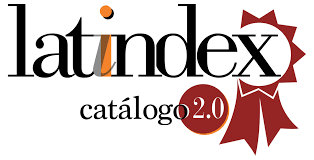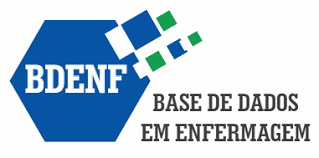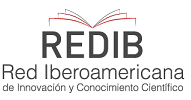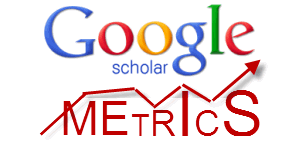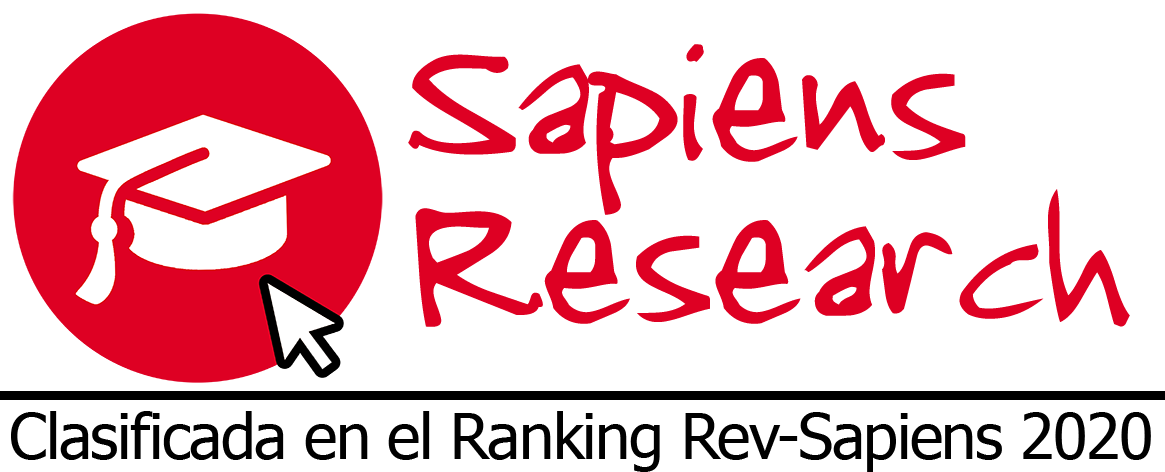About the Journal
Focus and scope
Avances en Enfermería is a peer-reviewed scientific journal that publishes original research articles in the fields of Nursing and Health Sciences. The journal publishes original, unpublished articles in Spanish, English, and Portuguese, that is, documents that have not been previously published in any format (electronic or print) and are not simultaneously under consideration by other publications or media.
Since 2022, Avances en Enfermería has adopted a continuous publication model. However, it still publishes three issues per year, which are completed as articles finish the peer-review and editorial processes.
Avances en Enfermería is a diamond open-access publication. Therefore, the journal does not charge readers for article downloads. Additionally, the assessment, peer-reviewing, and publication processes do not generate any fees for authors.
Peer Review Process
Article selection and review process
Before submitting an article for the first time, please carefully read the journal's editorial and data policies.
The process for reviewing and subsequently selecting articles for publication in Avances en Enfermería is as follows:
- Once submitted through the journal’s OJS system, all articles are initially reviewed by the editorial team in order to verify that they meet the formal requirements outlined in the Guidelines for Authors. If an article does not meet these criteria, it will be rejected and will not advance into the evaluation process. If case of minor non-compliance, the manuscript will be returned to the authors with instructions for adjustments before continuing with the process.
- If the article meets the formal requirements, it will be subjected to the journal's content similarity review system (Turnitin) and undergo a thorough check of bibliographic references. Following this, the authors will receive an electronic notification detailing the next steps in the process.
- Subsequently, the editorial team will assign two (2) peer reviewers, who will evaluate the manuscript. These reviewers must be experts in the subject matter of the article and, preferably, external to the publishing institution. If the article is accepted by one reviewer and rejected by the other, a third reviewer will be appointed.
Avances en Enfermería conducts a double-blind peer reviewing process. This means that the identities of the authors and reviewers remain anonymous to each other. The deadline for submitting the review is fifteen (15) calendar days, and each reviewer will be notified of the due date for submitting their evaluation concept. Reviewers are required to use the evaluation form available on the OJS platform to complete their assessment.
- Based on the reviewers' feedback, the Associate Editors will determine whether the manuscript will continue in the editorial process. In either case, the author will receive an electronic communication detailing the reviewers' comments and the decision made. If accepted, the author will be informed of the suggested revisions and changes to be made before publication, with a deadline of no more than fifteen (15) calendar days. If the authors do not reply or fail to make the requested adjustments within this period, the article will be withdrawn from the OJS platform and the journal's databases.
- Once the authors submit the revised version, the Assistant Editor will forward the document to the Associate Editors for a second review. They will decide whether the article is ready for publication, based on the suggested changes and the revisions made by the authors.
If the article is accepted, the Assistant Editor will conduct a final review of the document before it is submitted for copyediting. After the necessary edits are made, the article will be returned to the authors for final approval within a period of no more than five (5) days. The authors must provide authorization and clearly indicate any changes they do not accept, as they are responsible for all statements made in their work, including those altered by the copyeditor or Assistant Editor.
- If the authors do not reply back within five (5) business days after receiving the copyedited version, the editorial team will assume they accept the editorial changes made to the manuscript.
- To finalize the editorial process, the article will be sent in its final version for layout and approval by the authors.
- Subsequently, the published article will be sent to the various indexing services and directories for the respective process.
- The editorial process for each article, from submission to publication, could take approximately six (6) months.
Open Access Policy
This journal provides immediate open access to its content, based on the principle that making research freely available to the public supports greater global knowledge exchange.
Avances en Enfermería is a diamond open-access publication, meaning that the processes of peer reviewing, evaluation, and publication are free of charge for authors. Likewise, readers are not charged to access the content published.
The journal encourages the sharing of research data in open-access repositories. Research data includes models, methods, reports, software, procedures, questionnaires, statistics, and other data that can be shared and potentially useful for the development of new research studies.
Avances en Enfermería aligns with the definitions of open access provided by BOAI and DOAJ, supporting the transparent and accessible exchange of knowledge through collaborative networks and adopting the FAIR principles. The published content is licensed under the Creative Commons Attribution 4.0 International License (CC BY-NC 4.0). The journal promotes the use and benefits of open data and is committed to the Colombian Open Science Policy.
Digital preservation
The preservation of the journal's content, in the event that it ceases publication (archive access) or under any other circumstance, is ensured through the use of the LOCKSS system (https://www.lockss.org/join-lockss/networks/global-lockss-network). To verify the use of this application please go to: https://revistas.unal.edu.co/index.php/avenferm/gateway/lockss
Editorial ethics policy
Avances en Enfermería establishes the following criteria and recommendations related to ethics in the publication of scientific articles:
1. General principles
The Ethics and Scientific Integrity policy of Avances en Enfermería is governed by the recommendations and procedures related to publication ethics suggested by the following organizations: the guidelines established in the International Committee of Medical Journal Editors (ICMJE) recommendations for the conduct, reporting, editing, and publication of scholarly works in medical journals, the World Association of Medical Editors (WAME), the Declaration of Helsinki of the World Medical Association (WMA) for medical research involving human subjects, the Singapore Statement on Research Integrity, and the Committee on Publication Ethics (COPE).
Although the journal is not an active member of some of these organizations, the policies outlined below have been adopted from these advisory bodies and will be modified and adapted as necessary to meet the specific objectives of peer-reviewed journals in the field of nursing.
Research design and scientific integrity
According to WAME recommendations, the research that serves as the basis of the articles submitted to the journal must be adequately justified, planned, and designed to achieve the research objectives.
Proper management of the data supporting the research is essential, maintaining high standards of quality while paying special attention to data collection, production, preservation, analysis, and communication. Manuscripts should contain sufficient detail and references to allow for the replication or challenge of the study.
If the study involves chemicals, procedures, or equipment that pose any unusual inherent risks associated with their use, the author must clearly identify them within the article.
Information obtained privately must not be used without explicit written permission from the source. Reusing tables or figures requires permission from both the author and the publisher, which should be properly acknowledged in the table or figure legend.
Approval from the Ethics Committee
All research from which articles are derived that involve the participation of living beings, including human and non-human animals, must include a statement explicitly declaring that all procedures were conducted in accordance with ethical guidelines and regulations. Additionally, such research must count with approval from an ethics committee, which must be verifiable through documentation that should be attached at the time of submission.
Research data preservation
Authors must retain the data and detailed records of raw data, including the original versions of manuscripts, source files for figures, graphics, and backup materials. These records should be accessible for review if requested by the editors, even after the article has been published.
Informed consent
Informed consent must be properly documented. If the study involves the participation of minors, they must provide their assent to participate, and the parents or guardians of the minor must authorize their participation through consent.
Permissions and authorizations must be obtained when an author wishes to include case details, personal information, images of patients, or any other individuals. It should be noted that the use of photographs of participants or explicit statements—such as parts of an interview—requires written authorization from the individuals involved or their legal representatives.
Originality and prior publication
The journal accepts only original works that have not been previously published in other means. Authors must declare whether the manuscript or any part of it, regardless of the language in which it was originally written or published, has been published or is under consideration elsewhere. The journal does not consider the previous presentation of a study at a conference, the publication of an abstract associated with conference proceedings, or the publication of a study on a recognized preprint server (e.g., bioRxiv) to constitute prior publication.
At the time of submission, and in the "Acknowledgments" section, authors must disclose whether the study described was previously presented at a conference or meeting, published in the form of conference proceedings, or posted on a preprint server. Any reference or use of previously published material protected by copyright must be explicitly acknowledged in the manuscript.
Publication of submitted material on a website, such as an institutional repository (thesis) or academic profiles, may be considered prior publication and should be indicated in the comments to the editor at the time of submission. Redundant publication is not permitted; this occurs when multiple articles share the same data or results without complete cross-referencing in the text. At the time of submission, authors must disclose details of related articles they have prepared, even if written in a different language.
2. Authorships and contributions
Avances en Enfermería recognizes as authors those individuals who have made a significant intellectual contribution to the study. Thus, all persons named as authors must meet the authorship criteria, and all who qualify must be explicitly mentioned. Individuals who participate in a study but do not meet the authorship criteria should be acknowledged as collaborators or recognized individuals in the acknowledgments section.
The order of authorship should be a joint decision among co-authors. Some groups list authors in alphabetical order, sometimes with a note explaining that all authors made equal contributions to the study and publication.
To be recognized as an author, individuals must fulfill the four fundamental criteria set by the ICMJE, the authorship recommendations of the WAME, and the elements outlined in the COPE discussion document. All authors must meet the above conditions, specifically:
- Significant contribution to the conception and design, data acquisition, analysis, and interpretation of the study.
- Drafting or critically revising the intellectual content.
- Approval of the final version for publication.
The main cases of authorship considered unacceptable include ghost authors, who contribute significantly but are not recognized—often being paid by commercial sponsors; guest authors, who make no discernible contribution but are named to enhance the chances of publication; and honorary authorships, which are based solely on a tenuous affiliation with a study. We invite authors to avoid such practices.
Claims regarding potential authorship issues, contributions, and other allegations of editorial ethical violations concerning authors will be resolved in accordance with the recommendations by the COPE and the editorial ethics resources (PERK).
Recommendations
- Before initiating the research, it is recommended to document the role and how authorship will be recognized for each researcher. The contribution of each author, both in the research and in the preparation of the manuscript, must be submitted when the document is submitted to the journal. To ensure transparency regarding the authorship of the manuscript, the use of the CRediT taxonomy is mandatory. This taxonomy describes the contribution of each author to the research outcomes.
- The use of ORCID is also recommended, as it provides a persistent digital identifier for researchers.
- One should not misrepresent a person's involvement in the research or publication. If their contribution is deemed substantial, authorship is justified, whether as an author or as a collaborator.
- Authorship should not be assigned without the consent of the individual.
Changes in authorship
This refers to the addition, deletion, or rearrangement of author names in the authorship of an accepted or published article. Requests to add or remove an author, or to reorganize the names of the authors, must be submitted by the corresponding author of the accepted article and must include:
- The reason for the addition or deletion, or the names of the authors to be reorganized.
- Written confirmation (via email) from all authors agreeing to the addition, deletion, or rearrangement. In the case of adding or removing authors, confirmation that the author is to be added or removed must be included.
Any claims regarding authorship should be sent to the journal's email (revavenf_febog@unal.edu.co) along with evidence of the authenticity of the individual's involvement in the research or in the article. Upon receiving the request, this information will be corroborated with the co-authors of the article, and subsequently reviewed by the journal’s Editorial Committee in accordance with best practices regarding authorship and contribution.
Finally, the journal has adopted the following recommendations from the ICMJE related to authorship and contributions:
- Limit on authors: The number of authors is limited to six; in exceptional cases, such as multicenter studies or others, the inclusion of additional authors will be considered. The inclusion of new authors after submission is not permitted.
- Each author must assume responsibility for the content. Therefore, they must submit a written letter of originality for the manuscript and transfer rights and be accountable for the work as a whole.
- When submitting a manuscript written by a group of multiple authors, the corresponding author must clearly indicate the order of appearance of each author and the preferred citation format.
- The acquisition of funding, data collection, patients or samples, or general supervision of the research group does not constitute authorship.
- Articles by the same author will not be published within the span of one year.
3. Conflict of interests
Editors, authors, and peer reviewers must disclose any interests that may affect their ability to present or review the work objectively. These may include relevant financial interests (e.g., patent ownership, stock ownership, consultancies, or speaker fees) or personal, political, or religious interests.
Authors should not enter into agreements that interfere with their access to all data and their ability to analyze it independently, as well as to prepare and publish manuscripts. Authors are advised to consult the ICMJE's discussion of financial and non-financial relationships and activities and conflicts of interest, as well as the WAME document on conflicts of interest in peer-reviewed medical journals.
For all submissions, regardless of the type of article, authors must include conflict of interest statements both in the comments to the editors at the time of submission and in the “Acknowledgments” section of the manuscript. If authors have no conflicts of interest to disclose, this should also be stated.
Authors may provide the editor with the names of individuals whom they believe should not be asked to review a manuscript due to potential conflicts of interest.
Authors should explain their concerns in their comments to the editor at the time of submission. The journal editor will take this information into account when determining whom to invite to review the manuscript.
Some examples of potential conflicts of interest include:
- Receipt of financial support or research grants from an entity by third parties.
- Membership on a scientific advisory panel or another permanent scientific committee.
- Receipt of payment or fees for author contributions or authorship designation.
- Personal opinions that are in direct conflict with the subject being researched.
- Any type of personal interest in the outcomes of the research.
- Any other relationship that readers may perceive has influenced, or appears to have influenced, the content of the submitted work.
The Editor and the Associate Editors are required to refrain from making any final decisions on manuscripts for which they may have personal or professional biases. In such cases, a different member of the editorial team or an "ad hoc editor" (for example, a former editor of the journal) will be appointed to handle the review of the manuscript and make a decision regarding it.
The editor may use the information disclosed in conflict of interest and financial interest statements as a basis for editorial decisions.
Once an article has been accepted by the Editorial Committee, the authors must include the section on Funding and conflicts of interest, which should appear after the conclusions and before the references. In these sections, authors should indicate whether the research received funding from any public or private institution, and whether it is part of or committed to a grant, contract, or research project. The role of all sources of financial support for the project should be described in this section.
4. Use of artificial intelligence
The journal adheres to the guidelines set forth by JAMA for authors, reviewers, and editors regarding the use of artificial intelligence (IA) and other automated tools for content creation that will be presented in the journal.
AI, authorship, and content creation
AI, language models, machine learning, or similar technologies are not considered authors. If these models or tools are used to generate content or assist in the writing or preparation of manuscripts, the authors must assume responsibility for the integrity of the generated content. Authors are required to inform the editorial team of their usage and explain in the Methods section if this is part of the design or formal research methods. A description of the content that was created or edited, along with the name of the language model or tool, the version, and the manufacturer, must be included. This does not include basic tools for checking grammar, spelling, or references.
AI and image development
The submission and publication of images created by AI, machine learning tools, or similar technologies are not accepted unless they are part of a formal research design or method. In such a case, a clear description of the content that was created and the name of the version of the tool used must be included in the article. Authors must assume responsibility for the integrity of the content generated by these models and tools.
AI and peer reviewing
A reviewer must not input any part of the manuscript, abstract, or text of the review into a chatbot or similar AI tool, as this constitutes a breach of confidentiality. Manuscripts submitted to the journal are confidential and cannot be reused or shared in any manner. Peer reviewers are responsible for all content included in their reviews.
5. Preprints
Preprints refer to a version of a scientific article that has not yet undergone peer review. Avances en Enfermería accepts manuscripts that have been previously deposited in a non-commercial preprint server, provided they have not been submitted for peer reviewing to another journal simultaneously and that authors’ names are not visible.
The corresponding author responsible for the submission must inform whether the manuscript has been deposited in a preprint server and must provide the corresponding DOI. The manuscript must adhere to a license that allows sharing the material in any medium or format (Creative Commons - CC-BY).
Examples of servers include SciELO Preprint - Emerging Researchers Information (EmeRI) and Medrxiv international.
Avances en Enfermería follows the recommendations of the Transparency and Openness Promotion (TOP) guidelines.
6. Policy on inadequate scientific practices
The journal adheres to the fundamental practices of the Committee on Publication Ethics (COPE) and will handle cases of research and publication misconduct according to the terms referred at https://publicationethics.org/core-practices.
Common forms of scientific misconduct
Plagiarism: All submissions to Avances en Enfermería are always screened by a content similarity verification program (Turnitin). Plagiarism in all its forms constitutes unethical conduct in both editorial and academic contexts and is unacceptable.
Plagiarism is one of the most common forms of misconduct in publications. It occurs when an author presents the work of others as their own without permission, citation, or acknowledgment. Plagiarism can take various forms, ranging from literal copying to paraphrasing someone else's work, including data, ideas, concepts, words, and phrases.
Recommendations:
- Remember that it is essential to cite the publications that have been influential in determining the nature of the work presented—including the work of your advisor or your previous work on the subject—as part of the process.
- Do not reproduce a work verbatim, in whole or in part, without permission and acknowledgment of the original source. Literal copying is only acceptable—if strictly necessary—if the original source is indicated and the copied text is enclosed in appropriate citation marks.
- Keep a record of the sources used in your research and where they were employed in the writing of your article.
- Paraphrasing is only acceptable if the source is correctly indicated, and the meaning of the original intent is not altered.
- Cite all content taken from a previously published source, even if you are expressing it in your own words.
Self-plagiarism: Self-plagiarism occurs when authors use sections from their own previously produced works without proper citation. It is essential that the document does not contain the same matches with works already published by the authors themselves without appropriate citation.
Scientific misconduct: This refers to the presentation of false data or conclusions that were not generated through a rigorous research process.
The following types of scientific misconduct are identified in the publication of research results:
- Data fabrication: The invention of data and research results, which are then communicated.
- Data falsification: The manipulation of research materials, analysis methods, images, data, equipment, processes, tables, citations, and bibliographic references. Falsification includes the modification or omission of data or results in such a way that the research is not accurately represented. A person might falsify data to fit the desired final outcome of a study.
Both data fabrication and falsification are serious forms of misconduct, as they lead to scientific publications that do not accurately reflect the observed truth.
Avances en Enfermería adheres to international standards on intellectual property and copyright to prevent cases of fabrication, falsification, omission of data, and plagiarism. The journal does not accept articles that exhibit excessive self-citation and intentional manipulation of citations.
Fragmentation: This refers to dividing or segmenting a large study into two or more publications. It is considered unacceptable for the segments of a divided study to share the same hypotheses, sample, and methods.
The same fragment of text should not be published more than once. This is because fragmentation can lead to a distortion of the literature, misleading readers into believing that the data presented in each fragment—i.e., each article—derive from a different sample of subjects. This not only skews the scientific database but also creates ambiguous repetition for editors and reviewers, who must evaluate each work separately. Furthermore, it allows for an inflated number of references where the author is cited.
When submitting your work, please follow transparent practices during the process. Submit copies of articles that are closely related to the manuscript in question. This includes articles that have been published, recently submitted, or already accepted.
Multiple, redundant or concurrent publication: Multiple publication occurs when two or more articles, without citing each other, share essentially the same hypotheses, data, discussion points, or conclusions. This can occur in various ways: literal duplication, substantial partial duplication, or even duplication through paraphrasing.
One of the main reasons that the duplicate publication of an original research is considered unethical is that it can lead to improper weighting or unintentional double counting of the results of a single study, which distorts the available evidence.
An author should not publish manuscripts that describe essentially the same research in more than one journal or primary publication. Submitting the same manuscript to more than one journal constitutes unethical behavior, and its publication is unacceptable.
Recommendations:
- Although a submitted article is under review, it is necessary to inquire about its status, make the decision to continue or not with the editorial process, and only contact another journal if the first publisher will ultimately not publish said article.
- Avoid writing about your own research in two or more articles from different angles or on different aspects of the research without referencing the original article.
Retraction
Involuntary errors are part of the scientific and publication process and require the publication of a correction notice when detected. However, errors significant enough to invalidate the results and conclusions of a manuscript may necessitate a retraction. When there is an allegation of scientific misconduct or concerns are raised regarding the conduct or integrity of the submitted or published work, the editor will initiate appropriate procedures in accordance with COPE guidelines.
Any individual can report concerns related to potential misconduct by any of the parties involved by sending an email to revavenf_febog@unal.edu.co. The sender should provide as much information as possible to clearly describe the potential cases of misconduct. These concerns will be reviewed by the journal’s Editorial Committee. Appeals regarding any decision related to a manuscript will not be considered.
Due diligence in the face of identifying inadequate practices
As soon as the journal becomes aware of an alleged misconduct or unethical behavior by any author or reviewer, the Editor will initiate a thorough investigation. The individual involved will be given an opportunity to defend and explain their position. Based on the available evidence, if it is determined that the infringement is minor, the Editor will issue a written warning to the individual to refrain from committing the infringement in the future.
However, if the noncompliance is deemed serious, the Editor will inform the editorial advisors of Avances en Enfermería. Based on the available evidence, if misconduct is determined, in addition to a warning notice, the individual’s employer will be notified of the incident, and the individual will be permanently included on a list of banned authors. The conclusion of the investigation and the corresponding decision will be communicated in writing to the individual involved.
In addressing unethical behavior, Avances en Enfermería will not discriminate against any individual based on race, religion, gender, age, ethnicity, political ideology, sexual orientation, country of origin, or other reasons. All allegations will be taken seriously and treated consistently until a final decision or definitive conclusion is reached.
The investigation process will be conducted in such a manner that the details of the incident are not disseminated beyond those individuals who need to be aware of the situation.
Process for authors to submit an appeal
Complaints may arise regarding the conduct of editors or peer reviewers (e.g., violations of confidentiality, undisclosed conflicts of interest, or misuse of privileged information), or they may stem from disputes over substantive decisions, such as retractions. Others may be of a more administrative nature (e.g., irregularities in editorial processes or complaints that journal staff are unresponsive). The journal will apply the recommendations and guidelines by the COPE to address suspicions of ethical misconduct.
- Correction of already published articles
In the event an author discovers a significant error or inaccuracy in a published work, it is the author's obligation to promptly notify the journal and cooperate in the correction process.
- Advertising and direct marketing policy
Avances en Enfermería does not permit commercial advertising on its website and does not engage in marketing activities on its webpage.
Bibliography
Black, William, Rodolfo Russo y David Turton. "The supergravity fields for a D-Brane with a travelling wave from string amplitudes". Physics Letters B 694, n.o 3 (noviembre de 2010):246-51.
Elsevier. Autoría. Ethics in research & publication". Accedido 8 de agosto de 2014. http://www.elsevier.com/__data/assets/pdf_file/0010/183394/ETHICS_ES_AUTH01a_updatedURL.pdf.
———. "Conflicto de intereses. Ethics in research & publication". Accedido 8 de agosto de 2014. http://www.elsevier.com/__data/assets/pdf_file/0006/183399/ETHICS_ES_COI01a_updatedURL.pdf.
———. "Envío simultáneo/múltiple, publicación duplicada. Ethics in research & publication". Accedido 8 de agosto de 2014. http://www.elsevier.com/__data/assets/pdf_file/0019/183403/ETHICS_ES_SSUB01a_updatedURL.pdf.
———. "Ethics. Conducting research". Accedido 8 de agosto de 2014. http://www.elsevier.com/journal-authors/ethics#conducting-research.
———. "Ethics. Writing an article". Accedido 8 de agosto de 2014. http://www.elsevier.com/journal-authors/ethics#writing-an-article.
———. "Fragmentación. Ethics in research & publication". Accedido 8 de agosto de 2014. http://www.elsevier.com/__data/assets/pdf_file/0018/183402/ETHICS_ES_SS01a_updatedURL.pdf.
———. "Fraude en investigación. Ethics in research & publication". Accedido 8 de agosto de 2014. http://www.elsevier.com/__data/assets/pdf_file/0017/183401/ETHICS_ES_RF01a_updatedURL.pdf.
———. "Plagio. Ethics in research & publication". Accedido 8 de agosto de 2014. http://www.elsevier.com/__data/assets/pdf_file/0016/183400/ETHICS_ES_PLA01a_updatedURL.pdf.
ICMJE Uniform requirements for manuscripts submitted to biomedical journals
The STM trade Association International Ethical Principles for Scholarly Publication
Elsevier educational content on Ethics in Research & Publication
World Association of Medical Editors (WAME) Best Practice
Committee on Publication Ethics (COPE) Guidelines on Editors in Chief sharing
Elsevier’s Publishing Ethics Resource Kit for Editors
World Medical Association (WMA) Helsinki Declaration for Medical Research in Human Subject
S. Public Health Service Policy on Humane Care and Use of Laboratory Animals
Elsevier policy on patient consent
WAME Editorial statement on COI
http://www.budapestopenaccessinitiative.org/read
Transparency and Openness Promotion (TOP) Guidelines (SPA – ENG)
Definition of open access DOAJ
Estadísticas (Google Analytics - Users) (Visitas)
Sponsors
Fund of the Research Management Unit of the Faculty of Nursing of the Universidad Nacional de Colombia, Bogotá Campus.









